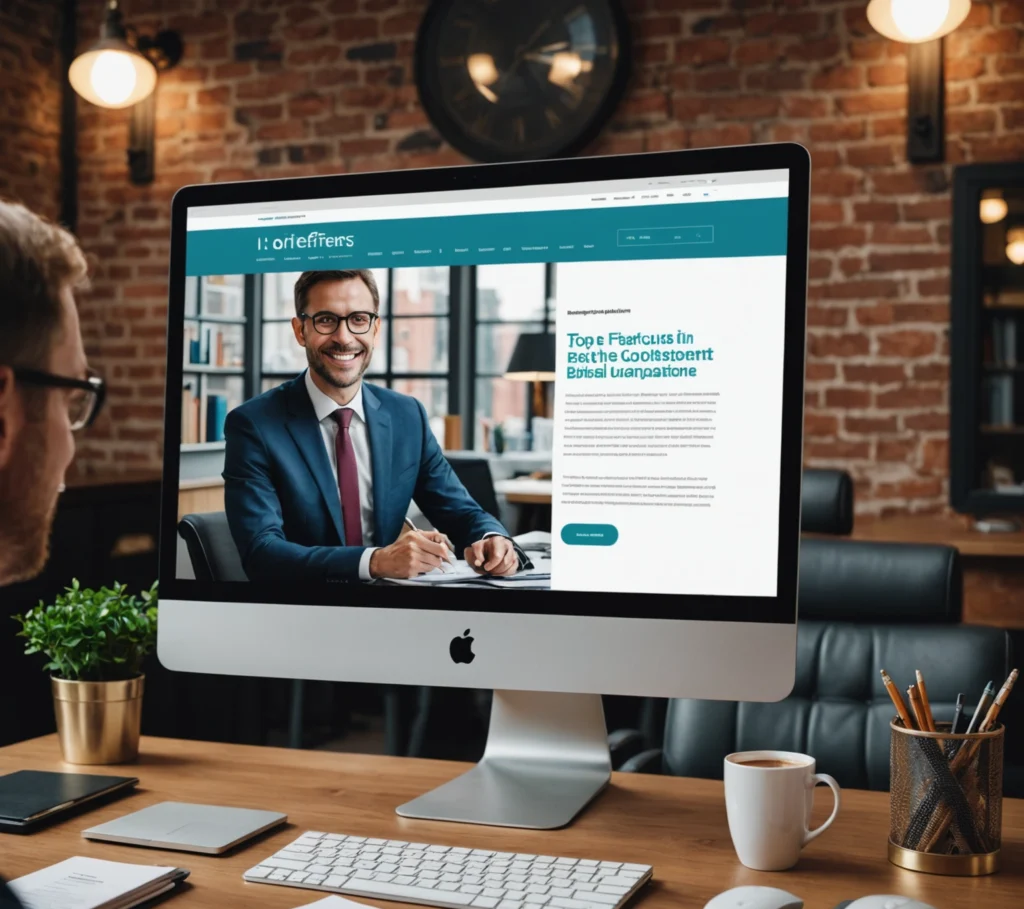
Introduction: A New Era for Law Firm Websites
In today’s fast-changing digital landscape, law firm websites transform into immersive experiences that capture attention. Moreover, these websites rise above merely acting as digital business cards. They create engaging, client-focused content that guides visitors through a narrative journey. Furthermore, prospective clients find that such platforms not only provide necessary contact details but also serve as comprehensive resources. Consequently, law firms increasingly invest in design, branding, and clear messaging that clarifies their mission and illustrates why they are the perfect fit for potential clients.
The Evolution of Client Focused Content
Understanding the Client’s Journey
Law firm websites now focus on creating engaging content that educates while it informs. First, websites offer an overview of legal processes in an understandable form. Then, they break down complex information into digestible sections. Additionally, high-quality videos, interactive graphics, and dynamic call-to-action buttons ensure a smooth navigation experience. For instance, a well-designed website will present content using the following structure:
- Introduction to services
- Detailed practice area descriptions
- Client testimonials and case studies
- Accessible video content and FAQs
Subsequently, these elements assist visitors in understanding legal procedures without being overwhelmed. In addition, the integration of frequent blog updates keeps the content fresh and continuously informative.
Case Study: After Service LLC
A Pioneering Example of Engaging Design
After Service LLC illustrates how to successfully combine professional design with client-centered practice. Initially, visitors notice design elements that reflect a unique theme. The site employs a tagline such as “a veteran for veterans” that immediately appeals to its target audience. Moreover, the website uses color schemes such as muted red, white, and blue for visual consistency. In addition, navigation remains user-friendly, with a visible “Start Here” button on the homepage. The navigation and calls to action appear consistently across the website, including a prominently placed phone number at the top right corner and an easily accessible chatbot at the bottom right. Such design choices foster immediate trust and usability.
Interactive Elements Driving Engagement
Utilizing Multimedia and User-Friendly Design
Law firm websites now incorporate multimedia resources to enhance engagement. For example, After Service LLC initiates visitor interaction by embedding a video on the homepage. This video features Greg, a military veteran, who explains his personal journey and the firm’s practice areas. Additionally, a collection of client testimonials appears as video clips, creating authentic and relatable narratives. These testimonials feature real clients discussing their experiences working with the firm, thereby increasing user trust. Similarly, the website utilizes numerical and bullet-point lists to break down the legal process:
- Clear explanation of legal terminologies
- Step-by-step guidelines
- FAQs presented in concise bullet points
Furthermore, the practice area pages include detailed content sections for topics such as Agent Orange Exposure. Initially, these sections offer educational content about the condition, afterward explaining the legal process and potential costs.
Structured Content that Educates and Informs
The Benefits of Layered Information
Law firms now know that layered content delivers superior user experience. Consequently, websites provide a primary educational section before introducing how they uniquely solve legal issues. This structure helps clients understand the legal landscape before feeling pressured for immediate conversion. The design strategy employs clear separations between informative content and actionable advice. Notably, a table can illustrate these differences:
| Feature | Description | Example Implementation |
|---|---|---|
| Engaging Video Content | Personalized videos that explain legal services and client stories. | Homepage walkthrough by firm founder |
| Client Testimonials | Authentic feedback presented in mixed formats. | Video clips and written testimonials |
| User-Friendly Navigation | Clear calls to action and intuitive layout design. | Prominent “Start Here” button and visible contact information |
This table highlights essential features while emphasizing benefits. In addition, structured content reduces cognitive overload and improves usability.
Regular Updates and Consistent Engagement
The Role of Updated Blogs and New Content
Law firms now understand that consistent updates propel ongoing visitor engagement. For example, After Service LLC updates its blog on a weekly basis. Consequently, the blog serves as a powerful tool for continuous client education. More importantly, it displays topics clearly summarized with bullet points and numbered lists. Furthermore, each blog entry starts with a table of contents that enhances navigation and facilitates quick access to key topics. This approach helps clients identify relevant information rapidly. Additionally, the blogs provide both timely legal commentary and evergreen content that remains useful in the long run. Therefore, regular content updates maintain a dynamic digital presence and increase visitor return rates.
Best Practices for Modern Law Firm Websites
Key Considerations for Client-Focused Design
Developers and marketers now emphasize the following best practices:
- Clear, engaging multimedia content that presents the firm’s story.
- User-friendly navigation that keeps visitors informed.
- Detailed practice area pages that combine education with actionable insights.
- Regularly updated blogs serving as reliable resources.
- Inclusive testimonials that build trust through personal client stories.
Additionally, law firms benefit by integrating modern design elements that meet both desktop and mobile requirements. Meanwhile, user-centered features such as accessible phone numbers and real-time chat support create a seamless interaction. Ultimately, the emphasis on interactive design and constant engagement sets modern law firm websites apart from traditional static pages.
Conclusion: The Future of Law Firm Engagement
Integrating Design, Content, and Technology
Undoubtedly, law firm websites in 2025 shape a new digital future where client-focused content reigns supreme. Noticeably, these websites integrate elegant design, interactive content, and frequent updates to provide visitors with educational resources. In addition, legal professionals now appreciate the benefits of adopting a narrative style that communicates their mission effectively. Therefore, every element — from videos and testimonials to well-structured practice pages — contributes to a holistic user experience. Moreover, law firms continuously adapt their content strategies to enhance engagement, thereby building lasting relationships with clients. In summary, the evolution of clients’ expectations drives firms to innovate with every online element, ensuring their websites remain indispensable legal resources.







